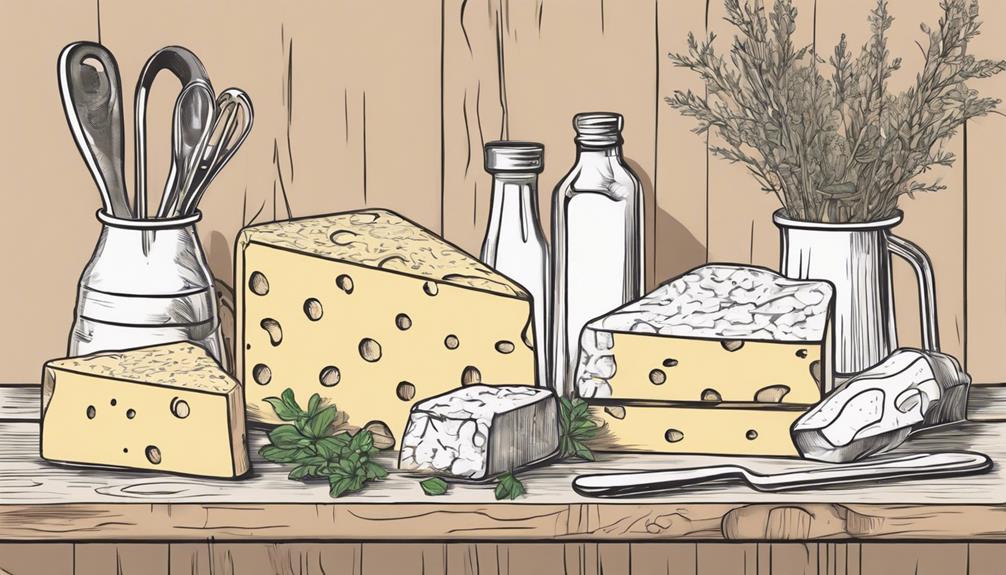See All: Cheese Making
Watch How To Do This Here…
YES! You can make cheese at home. Take our FREE 4-Part video training series to simplify cheesemaking for everyone. No waste. No overwhelm. No missing steps. You can make delicious, healthy cheese, even if you only have access to grocery store milk and regular kitchen equipment…
Click Here To Watch Step By Step Now
“Hey, I’ve been making cheese at home for a while now, and I’m starting to invest in some more specialized equipment. I’ve heard a lot about cheese molds but I’m a bit lost about which materials are the best. Can you help me out with that? I’m particularly concerned about the impact on flavor and safety. Thanks a ton!” Cheers, David, Portland, USA.
What Are The Best Materials For Cheese Molds?
Absolutely, David! This is such an exciting topic and I’m glad you brought it up. Picking the right material for cheese molds is super important—not only for the quality and taste of your cheese but also for safety and ease of use. Let’s nerd out on this, shall we?
Importance of Choosing the Right Material
Cheese molds do more than just give shape to your cheese; they also play a crucial role in whey drainage, texture, and even flavor development. The materials used can impact hygiene, cleaning ease, and longevity of the molds.
Common Materials Used for Cheese Molds
1. Plastic
Okay, plastic might not sound glamorous but it’s pretty popular for cheese molds, and for good reasons:
- Hygiene: Most food-grade plastics are non-porous, making them less likely to harbor bacteria.
- Durability: Plastics can withstand frequent use and are typically resistant to wear and tear.
- Affordability: They’re budget-friendly, which is great if you’re looking to expand your cheese-making equipment without breaking the bank.
- Ease of Cleaning: They’re usually dishwasher-safe and easy to sterilize.
However, not all plastics are created equal. Make sure you choose food-safe, BPA-free plastic to avoid any chemical leaching. Polypropylene is a safe bet.
2. Stainless Steel
Stainless steel molds are another popular choice, and for good reason:
- Durability: They’re incredibly durable and can last a lifetime if properly cared for.
- Non-Reactive: Stainless steel doesn’t react with the acidity in cheese, maintaining the flavor and quality.
- Hygiene: Non-porous and easy to clean, it’s less likely to harbor bacteria.
- Professional Appearance: Let’s face it, they look pretty sleek!
On the flip side, stainless steel molds can be pricier, but they’re often worth the investment if durability and hygiene are high priorities for you, David.
3. Wood
Wooden molds offer a rustic touch, but they’re quite specific in their use:
- Flavor Development: Wood allows for a unique interaction between the cheese and the mold, which can enhance flavor. This is particularly notable in traditional varieties like French Beaufort or Swiss Gruyère.
- Natural Aesthetics: They give your cheese a traditional, artisanal look.
- Whey Drainage: Wood, being slightly porous, helps in efficient whey drainage.
However, they can be more challenging to clean and sterilize, making them less ideal for beginners. If you’re going down the wooden mold route, be prepared for a bit more maintenance.
Less Common Materials
4. Ceramic
Ceramic molds are not as commonly used but have their own set of advantages:
- Non-Reactive: Ceramic doesn’t react with cheese, preserving flavor integrity.
- Aesthetic Appeal: They look beautiful and can be used directly as serving dishes.
They are, however, fragile compared to other materials and can be tricky to maintain, not to mention they come with a heftier price tag.
5. Silicone
Silicone molds are gaining traction for small-batch cheese making:
- Flexibility: The flexibility of silicone makes it easy to remove cheese without damaging it.
- Non-Stick Properties: They’re naturally non-stick and don’t require additional oils or sprays.
They’re not typically used for hard cheeses but are excellent for softer types like cream cheese or fresh goat cheese. One caveat is that they can sometimes impart a slight taste if not of high quality.
Factors to Consider
Alright, let’s get practical, David. When selecting your molds, consider the following:
- Type of Cheese: Different cheeses require different molds. Soft cheeses benefit from molds that allow significant whey drainage, while hard cheeses need sturdier molds.
- Frequency of Use: If you’re an avid cheese maker like it sounds, you’ll want molds that are built to last and can withstand constant use and sterilization.
- Cleaning and Maintenance: Some materials like plastic and stainless steel are low maintenance, whereas wood and ceramic might require more care.
- Budget: While high-quality molds might be pricier, they often pay off in the long run with durability and ease of use.
Additional Tips
Just to wrap things up with some nuggets of wisdom:
- Mix and Match: Don’t feel pressured to stick to one material. You could use silicone molds for soft cheeses and stainless steel for harder varieties.
- Invest Wisely: High-quality molds will save you money in the long run. They’re more durable and reliable.
- Stay Flexible: Sometimes, unconventional materials can surprise you. Don’t shy away from experimenting a bit.
Final Thoughts…
David, thanks a ton for reaching out with such a thoughtful question. Investing in the right cheese molds can elevate your cheese-making game incredibly and fits well with your dedication to this craft. Remember to prioritize hygiene, durability, and the specific needs of the cheese you’re making. Enjoy the process and happy cheese making!
Return To: Cheese Making
Free Step By Step Cheese Making Videos…
YES! You can make cheese at home. Take our FREE 4-Part video training series to simplify cheesemaking for everyone. No waste. No overwhelm. No missing steps. You can make delicious, healthy cheese, even if you only have access to grocery store milk and regular kitchen equipment…

